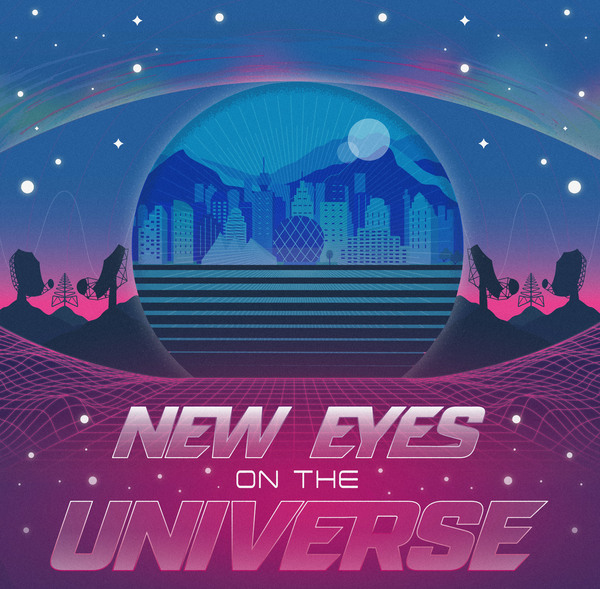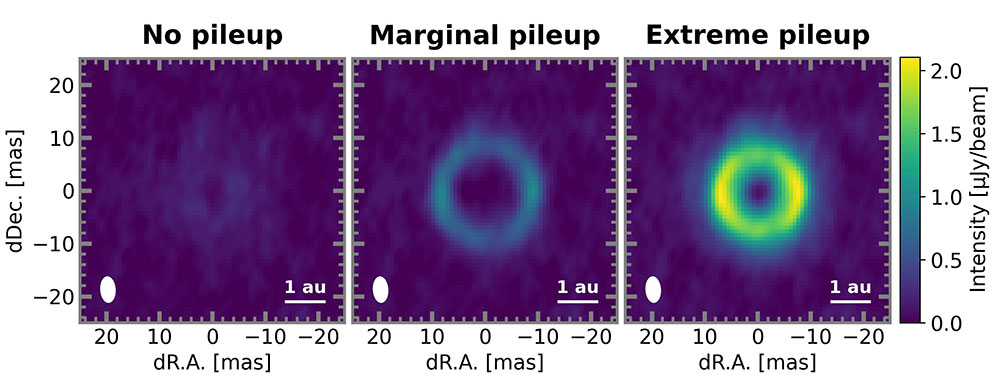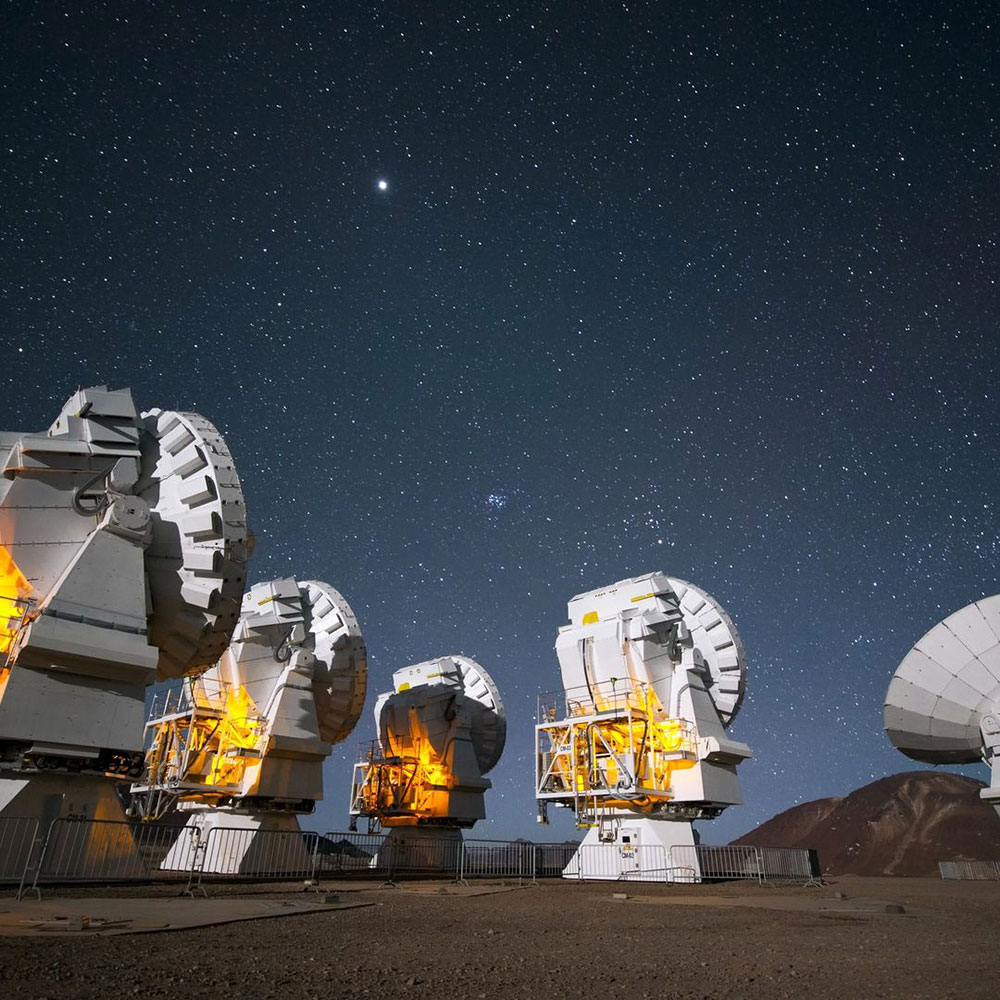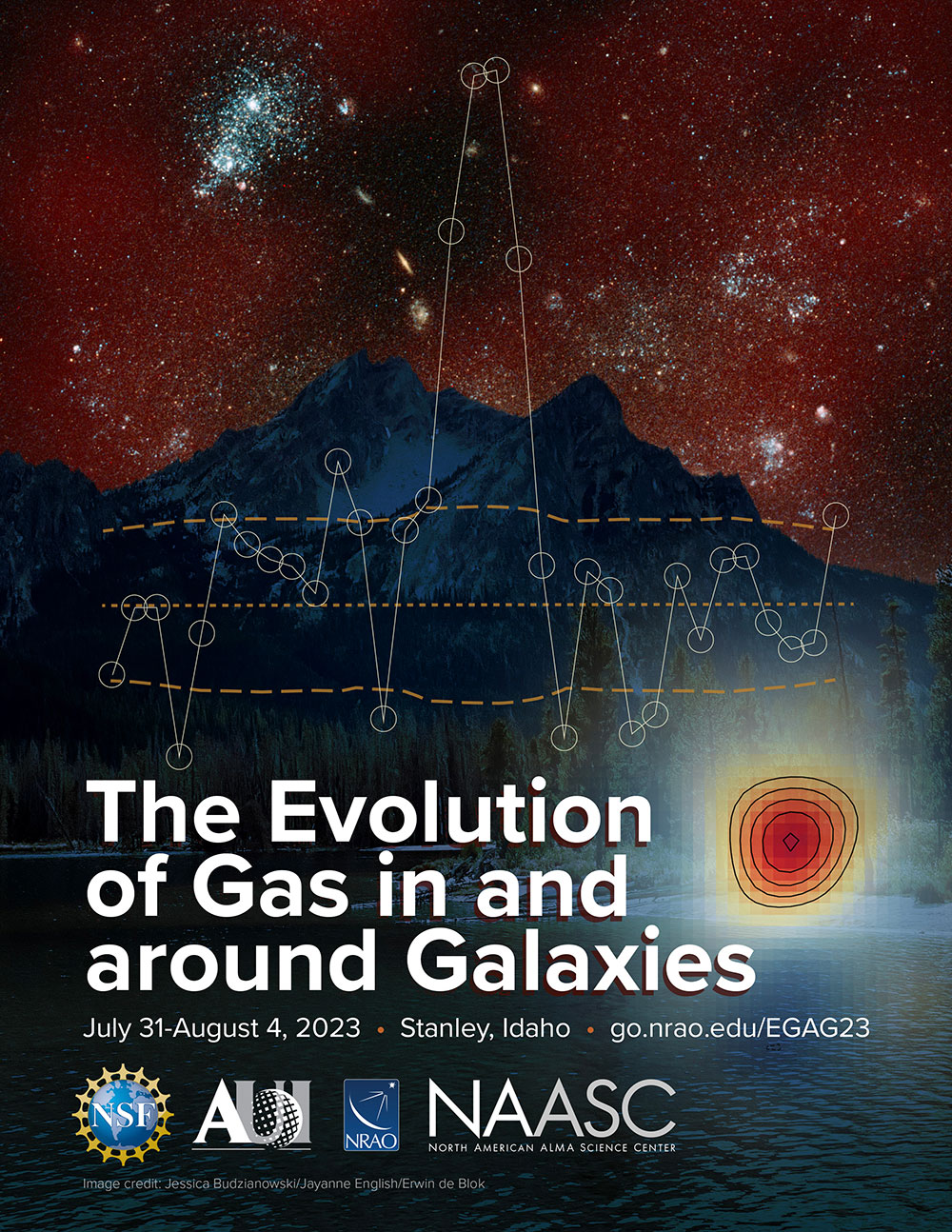NRAO eNews
Volume Vol#, Issue Iss#
Day# Month# Year#
NRAO eNews
Volume Vol#, Issue Iss# • Day# Month# Year#

NRAO at the Seattle AAS
All times are PST.

† This Splinter Session will be a hybrid event open to community members not attending the AAS meeting. The Zoom link for this event will be active about 30 minutes before the session starts.
NRAO/GBO Press Conferences
Five new scientific results from the Atacama Large Millimeter/submillimeter Array (ALMA), the Very Large Array (VLA), and the Green Bank Observatory (GBO) will be revealed at multiple press conferences during the 241st meeting of the American Astronomical Society (AAS) from January 8 to 12, 2023, in Seattle, Wash.
Press conferences will be held in person during the conference, and streamed live on the AAS Press Office YouTube Channel. See our recent press release for full list of conferences and times.
Upcoming Events

38th New Mexico Symposium
Feb 17, 2023 | Socorro, NM

New Eyes on the Universe: SKA & ngVLA Conference
May 1 - 5, 2023 | Vancouver, Canada

19th Synthesis Imaging Workshop
Jun 13 - 21, 2023 | Charlottesville, VA

The Evolution of Gas in and around Galaxies
Jul 31 - Aug 4, 2023 | Stanley, ID
NRAO Call for Proposals: Semester 2023B

The National Radio Astronomy Observatory (NRAO) invites scientists to participate in the Semester 2023B Call for Proposals for the Karl G. Jansky Very Large Array (VLA) and the Very Long Baseline Array (VLBA), High Sensitivity Array (HSA), and Global mm VLBI Array (GMVA).
The submission deadline for Semester 2023B proposals is Wednesday, 1 February 2023, at 17:00 EST (22:00 UTC).
We would like to highlight a new opportunity for joint observations between ALMA and the VLA. Please see Joint Proposals for more information.
We note that NRAO accepts Large Proposals that require at least 200 hours of observing time, and we particularly encourage the submission of Large Proposals for the VLBA. Please see the VLBA, HSA, and GVMA Proposal Guide for more information.
Proposal preparation and submission are handled via the NRAO Proposal Submission Tool (PST) available at NRAO Interactive Services. Proposers who need assistance with proposal preparation or have questions regarding the Call for Proposals or NRAO telescope capabilities should contact Observatory staff via the NRAO Helpdesk. Note that using these tools (both the PST and the Helpdesk) requires registration.
ngVLA Project News

New Eyes on the Universe: SKA & ngVLA Conference
Please join us 1-5 May 2023 as we discuss and extend the cutting-edge
science opportunities enabled by the unprecedented SKA-ngVLA coverage
spanning three decades of frequency. The conference will be held in
Vancouver, Canada at the Pan Pacific Hotel. It will primarily be in
person with online participation available. Abstract submission is
open. Registration and financial support requests open on 16 January 2023.
Probing Rocky Planet Formation with the ngVLA

Synthetic ngVLA images at 43 GHz of the innermost regions of disks with no dust grain pileup (left), marginal pileup (center) and extreme pileup (right). Ueda et al. (2022)
[click to enlarge]
The discovery of substructures in protoplanetary disks with ALMA has provided key insights about the formation of planets (e.g., Andrews 2020). However, observations of regions where rocky planets form are still sparse, especially because of the limited spatial resolution.
The inner edge of the so-called dead zone is one of the most important sites for rocky planet formation because it captures large dust grains drifting from outer regions (Ueda et al. 2019). The local accumulation of dust triggers the formation of planetesimals via the streaming instability and/or gravitational instability of the dust disk.
In Ueda et al. (2022) we showed that the ngVLA is a powerful tool for probing rocky planet formation at the dead-zone inner edge around Herbig stars. For a typical intermediate mass star with 56 times the Solar luminosity, the dead-zone inner edge is located at about 1 au from the central star. Thanks to the ngVLA's unprecedented angular resolution at wavelengths of 0.3-1cm, the dust pileup at the dead-zone inner edge can be spatially resolved as a ring-like structure. Even if dust grains only marginally pileup at the dead-zone inner edge, the ngVLA can detect the ring-like structure with a reasonable integration time of 10 hours (see figure).
Close-in exoplanets are known to be common around Solar-type stars. There are competitive models of the origin of those exoplanets: in-situ formation at the dead-zone inner edge (e.g., Chatterjee & Tan 2014) or inward migration from the outer regions (e.g., Coleman & Nelson 2016). ngVLA observations will provide us with key clues about the formation of the close-in exoplanets.
Since 2015 the acronym ngVLA has appeared in 900+ publications indexed in the SAO/NASA Astrophysics Data System. This article continues a regular feature intended to showcase some of those publications. We are especially interested in showcasing work done by early-career researchers. The collection of showcase articles can be viewed online. Anyone wishing to volunteer to author a feature should contact Joan Wrobel.
ALMA Program News

ALMA (ESO/NAOJ/NRAO)
ALMA antennas have resumed their exploration of the radio / far infrared Universe
[click to enlarge]
ALMA Cycle 9 in 2023
ALMA resumed Principal Investigator science observations last month following the Fall cyberattack. ALMA is currently taking observations in configuration C-3 and delivering data to users.
As previously announced, ALMA’s most compact configurations (C-1 and C-2) will not be visited again in Cycle 9. Projects with Schedule Blocks in nominal configurations C-1 and C-2 that can still be observed in configuration C-3 will remain in the observing queue. As per usual ALMA policy, incomplete Cycle 9 Grade A projects will carry over into Cycle 10. The Cycle 10 pre-announcement will now be issued the week of 16 January 2023.
ALMA announces Joint Proposal agreements for JWST, VLA, and the VLT
The ALMA Observatory is pleased to announce that it has entered into Joint Proposal agreements with the Space Telescope Science Institute (STScI) for the James Webb Space Telescope (JWST), the National Radio Astronomy Observatory (NRAO) for the Karl G. Jansky Very Large Array (VLA), and the European Southern Observatory (ESO) for the Very Large Telescope (VLT). Please see the ALMA Science Portal for details.
American Astronomical Society Meeting Special Session
A Special Session titled ALMA Status and Plans for Increased Capability has been accepted and scheduled for the January American Astronomical Society (AAS) meeting in Seattle, Washington in Ballroom 6 on Monday, 9 January 2023, from 2:00-3:30 pm Pacific Standard Time. A new paper describing the upgrade is available. (See Carpenter, Brogan, Iono, & Mroczkowski (2022), 'The ALMA2030 Wideband Sensitivity Upgrade', (ALMA Memo 621; arXiv:2211.00195).
The Evolution of Gas in and around Galaxies

[click to enlarge]
We invite you to consider the conference "The Evolution of Gas in and around Galaxies", which will take place 31 July to 4 August 2023, in the dark sky reserve of beautiful Stanley, Idaho, USA. The goal of the conference is to compare and contrast the results of new HI 21cm, C+, and circumgalactic medium studies, made possible by the advent of a range of new telescopes, to compare them to theoretical predictions, and to place the new results in the context of galaxy evolution. Please see the meeting website for more details about the meeting.
Space for this meeting is limited to 60 participants due to venue constraints and a desire to keep discussions focused and lively. We aim to balance attendance between students, early-, mid-, and late-career astronomers, bringing together a diversity of experience, backgrounds, and interests. To help us achieve this balance, we request that all applicants complete an Expression of Interest, briefly describing their reasons for wishing to attend the meeting. The organizing committee has just begun to review the Expressions of Interest, and will continue either until 31 January 2023, or until all available spaces are filled. Applicants would be invited to register, based on this review process. We emphasize that registration will be invitation-only. We encourage all interested participants to complete their Expression of Interest as early as possible, as spaces may fill quickly.
Recent Media Releases
|
Science Results From NRAO Facilities to Be Presented at Multiple AAS 241 Press Conferences |
|
|
Design Review for ngVLA Antenna Clears Way for Prototype Construction |
From the Archives
Ellen Bouton

[click to enlarge]
About this month's photo: In early December 2000, on the occasion of the dedication of the Carnegie Institution of Washington's Magellan Telescope in La Serena, Chile, CIW's John Lively and others took the opportunity to visit the (still empty) ALMA high site. Left to right: John Lively (CIW), Eduardo Hardy (ALMA), Sandra Faber (U. California Observatories), Bob Brown (NRAO), Thomas Urban (CIW Board Chair), Jean Lively, Andrew Faber.
From the Archives is an ongoing series illustrating NRAO and U.S. radio astronomy history via images selected from our collections of individuals' and institutional papers. If readers have images they believe would be of interest to the Archives, please contact Ellen Bouton.

